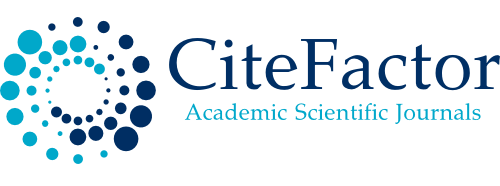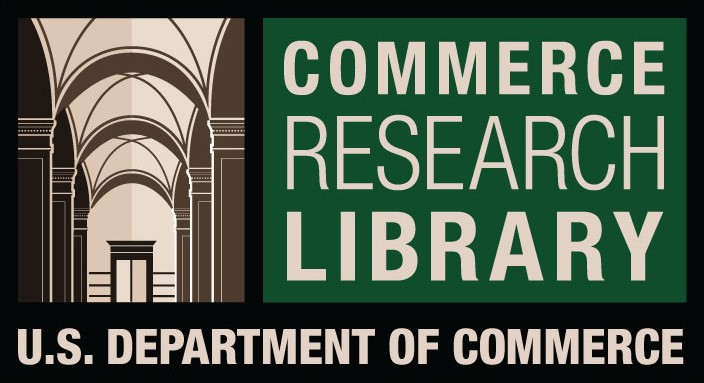Perceived Stressors of Public Teacher Education Students
DOI:
https://doi.org/10.61841/d7j63r78Keywords:
Perceived Stressors, Extent of Stressors,, personal-related profile, home-related profile,, chool- related profileAbstract
The study was conducted to determine the personal, home-related and school-related profile and stressors of students in Brigade School in India. The relationship between the profile variables and extent of stressors of the respondents and the difference in the stressors of the respondents when grouped by profile variables was likewise determined. The descriptive-correlational research design was used to describe and interpret the profile variables, the relationship between the profile variables and the extent of stressors, and the difference in the stressors when grouped according to profile variables. Majority of the 2,295 respondents are 19 years old, single, female, and Roman Catholics. They reside within driving distance from the school. Their mothers are mostly 46 year-old high school graduate housekeepers, and their fathers are mostly 48 year-old high school graduate farmers. The family consists of four siblings with two married and three unmarried siblings. They are third year Bachelor of Secondary Education students of. Financial-related factors were perceived the most stressful and environmental- related factors were ranked the least. On the average, all factors are “moderately stressful” and show moderate correlation with the students’ fathers’ educational attainments. Moreover, the stressors have a slight correlation with their mother’s occupation, campus, year level, and field of specialization. Hence, the null hypotheses were rejected. In conclusion, the respondents were moderately stressed financially, and their stress is interrelated to their father’s educational attainment, mother’s occupation, the campus where they are enrolled, year level, and field of specialization.
Downloads
References
1. Caldwell, M. (2018, April 02). Five strategies to deal with financial stress. Retrieved from http://www.thebalance.com/dealing-with-financial-stress-2385957.
2. Tao, S., Dong, Q., Pratt, M. W., Hunsberger, B., & Pancer, S. M. (2000). Social support: Relations to coping and adjustment during the transition to university in the People’s Republic of China. Journal of Adolescent Research, 5(1), 123-144. Retrieved from http://www.sciencedirect.com/science/article/pii/S1877042811027492.
3. Gall, T.L., Evans, D.R. & Bellerose S. (2000). Transition to first-year University: Patterns of change in adjustment across life domains and time. Journal of Social and Clinical Psychology, 19 (4) (2000), pp: 544-567. Retrieved from http://www.sciencedirect.com/science/article/pii/S1877042811027492.
4. Ong, Bessie, & Cheong, K. C. (2009). Sources of stress among college students - the case of a credit transfer programme [Electronic version]. College Student Journal, 43(4). Retrieved from http://www.sciencedirect.com/science/article/pii/S1877042811027492.
5. Habibah, E., Ping, W. S., & Abdullah, M.C. (2011). Stress and academic achievement among undergraduate students in Universiti Putra Malaysia. Pocedia-Social and Behavioral Sciences, 29, 2011,
pp. 646-655. Retrieved from http://www.sciencedirect.com/science/article/pii/S1877042811027492.
6. Misra, R. and Castillo, L.G. (2004). Academic stress among college students: Comparison of American and International students. DOI:10.1037/1072-5245.11.2.132.
7. Carveth, J.A., Gesse, T., & Moss, N. (1996). Survival strategies for nurse-midwifery students. Journal of Nurse-Midwifery, 41(1), 50-54. Retrieved from http://www.research.net/publication/2283678
8. Abouserie, R. (1994). Sources and levels of stress in relation to locus and control and self-esteem in university students. Educational Psychology, 14, 323-330. Retrieved from http://www.research.net/publication/2283678
9. Kohn, J.P. & Frazer, G.H. (1986). An academic stress scale: identification and rated importance of academic stressors. Psychological Reports, 59, 415-426. Retrieved from http://www.research.net/publication/228367874.
10. Seaward, B. L. (2018). Managing Stress Principles and Strategies for Health and Well-being. 9th edition. Jones and Bart Lett Learning. Retrieved from https://books.google.com.ph/.
11. Britt, S.L., Anthony, C., Fred, F., Stutz, K. and Tibets, R (2015) Financial Stress and Financial Counseling: Helping College Students. Journal of Financial Counselling and Planning. Vol 26, Issue 2 2015. Retrieved from http://files.eric.ed.gov/fulltext/EJ1088924.pdf.
12. Sifferlin, A. (2016). Stress is Contagious in the Classroom. Time-Health. Retrieved from http://time.com/4384135/stress-burnout-teachers/.
13. Yusoff, M. S. B, Rahim, A. F. A., & Yaacob, M. J. (2010). Prevalence and sources of stress among University Sains Malaysia medical students. Malaysia Journal of Medical Science, 17(1). Retrieved from http://file.scirp.org/pdf/CE_2015102918133707.pdf.
14. Morgan, M., & Kitching, K. (2007). Teaching in disadvantaged school: Job satisfaction of beginning Teachers. In A. L. Gilligan, & P. Downes (Eds.), Educational Disadvantage in Ireland (pp. 367-378). Dublin: Institute of Public Administration. Retrieved from http://file.scirp.org/pdf/CE_2015102918133707.pdf.
15. Hock, & Roger (1996). Professional burnout among public school teachers. Public Personnel Management, 101, 167-189. Retrieved from http://file.scirp.org/pdf/CE_2015102918133707.pdf.
16. Kyriacou, S., Kunc, R., Stephens, P., & Hultgren, A. (2003). Student teachers’ expectations of teaching as a aareer in england and norway. Educational Review, 55, 255-263. http://dx.doi.org/10.1080/0013191032000118910. Retrieved from http://file.scirp.org/pdf/CE_2015102918133707.pdf.
17. Kyriacou, C. (2001). Teacher stress: directions for future research, educational review. Educational Review, 53, 27-35. http://dx.doi.org/10.1080/00131910120033628. Retrieved from http://file.scirp.org/pdf/CE_2015102918133707.pdf.
18. Conners, D. A. (1983). The School Environment: A Link to Understanding Stress. Journal Article Vol. 22 No. 1. Retrieved from http://www.jstor.org/stable/1476235.
19. Hamaideh, S.H. (2011). Stressors and reactions to stressors among university students. International Journal of Social Psychiatry, 57(1), 69-80. Retrieved from http://www.nwpc.dole.gov.ph/pages/rb- 2/cmwr.html.
20. Albert, J. R. G. and Vizmanos, J.F. (2017). Closing the gender gap in economic Opportunities. Retrieved from http://www.rappler.com/thought-leaders/134739-gender-equality-economic-opportunities- philippines.
21. CHED: SY 2017-2018 best chance for lifelong learners to go to college (2017, May 15). Retrieved from https://chedk12.wordpress.com/2017/05/15/ched-sy-2017-2018-best-chance-for-lifelong-learners-to-go- to-college/.
22. Current daily minimum wage rates region II, Cagayan Valleys (2017, September 25). Retrieved from http://www.nwpc.dole.gov.ph/pages/rb-2/cmwr.html.
23. Gross, G. (2014, August 12). The important role of dad. Retrieved from https://www.huffingtonpost.com/dr-gail-gross/the-important-role-of-dad_b_5489093.html.
24. University student stress. (2018, April 8). [Wikiversity]. Retrieved from http://wikiversity.org/wiki/University_student_stress.
25. Hishan, S. S., Ramakrishnan, S., Manokaran, K. R., & Vaicondam, Y. (2020). Corporate social responsibility for natural disaster: A new method for organizational risk management. Journal of Advanced Research in Dynamical and Control Systems, 12(1 Special Issue), 111-115. doi:10.5373/JARDCS/V12SP1/20201053
26. Hishan, S. S., Ramakrishnan, S., Mansor, N. N. B. A., & Qureshi, M. I. (2020). Adoptability of machine learning and its relationship to learning style preferences. International Journal of Advanced Science and Technology, 29(4 Special Issue), 896-912.
27. Jena, M. K., Nayak, N., Chen, K., & Nayak, N. R. (2019). Role of macrophages in pregnancy and related complications. Archivum immunologiae et therapiae experimentalis, 67(5) 295-309.
28. Singh, H., Narang, J. K., Singla, Y. P., Narang, R. S., & Mishra, V. (2017). TPGS stabilized sublingual films of frovatriptan for the management of menstrual migraine: Formulation, design and antioxidant activity. Journal of Drug Delivery Science and Technology, 41, 144-156.
29. Kaur, H., Kaur, G., & Kumar, S. (2019). A Comparative Study of Body Mass Indices and Waist-Hip Ratios of Women in Relation to their Menstrual Status. Indian Journal of Public Health Research & Development, 10(2), 1042-1046
30. Upadhyay, S., Kumar, A. R., Raghuvanshi, R. S., & Singh, B. B. (2011). Impact of nutrition education on knowledge and haemoglobin status of hill women in Uttarakhand State of India. Malaysian journal of nutrition, 17(3), 347-357.
31. Lotfan, M., Ali, S. A., Yadav, M. L., Choudhary, S., Jena, M. K., Kumar, S., & Mohanty, A. K. (2018). Genome-wide gene expression analysis of 45 days pregnant fetal cotyledons vis-a-vis non-pregnant caruncles in buffalo (Bubalus bubalis). Gene, 654, 127-137.
32. Upadhyay, S., Kumar, S., & Sharma, A. (2013). Effectiveness of folifer supplementation alone vs supplementation in combination to nutrition education onbirth outcomes of rural women, India. Annals of Nutrition and Metabolism, 63, 740-741.
33. Kansra, P. (2018). Economic Burden of Diabetes among Women: A Comparison of Outpatient and Inpatient Care. Journal of Health Management, 20(3), 401-409.
34. Ruspini, E., & Bonifacio, G. T. (Eds.). (2018). Women and Religion: Contemporary and Future Challenges in the Global Era. Policy Press.
35. Prakash, C., Thakur, G. S. M., Vashisht, N., & Kumar, R. (2017). UMEED-a fuzzy rule-based legal expert system to address domestic violence against women. In Advances in Computer and Computational Sciences (pp. 631-638). Springer, Singapore.
36. Devi, S., Singh, K., & Pankaj, P. P. (2016). Prevalence, pathogenesis and diagnosis of sexual dysfunctions in diabetic women. International Journal of Pharma and Bio Sciences, 7(1B), 221-225.
37. Singh, B. (2016). Libidinal capitalism and women subscribers. Man in India, 96(4), 1055-1059.
38. Singh, K. (2016). Urban working women in the reflection of Indian society. Man in India, 96(4), 969-974
Downloads
Published
Issue
Section
License

This work is licensed under a Creative Commons Attribution 4.0 International License.
You are free to:
- Share — copy and redistribute the material in any medium or format for any purpose, even commercially.
- Adapt — remix, transform, and build upon the material for any purpose, even commercially.
- The licensor cannot revoke these freedoms as long as you follow the license terms.
Under the following terms:
- Attribution — You must give appropriate credit , provide a link to the license, and indicate if changes were made . You may do so in any reasonable manner, but not in any way that suggests the licensor endorses you or your use.
- No additional restrictions — You may not apply legal terms or technological measures that legally restrict others from doing anything the license permits.
Notices:
You do not have to comply with the license for elements of the material in the public domain or where your use is permitted by an applicable exception or limitation .
No warranties are given. The license may not give you all of the permissions necessary for your intended use. For example, other rights such as publicity, privacy, or moral rights may limit how you use the material.









